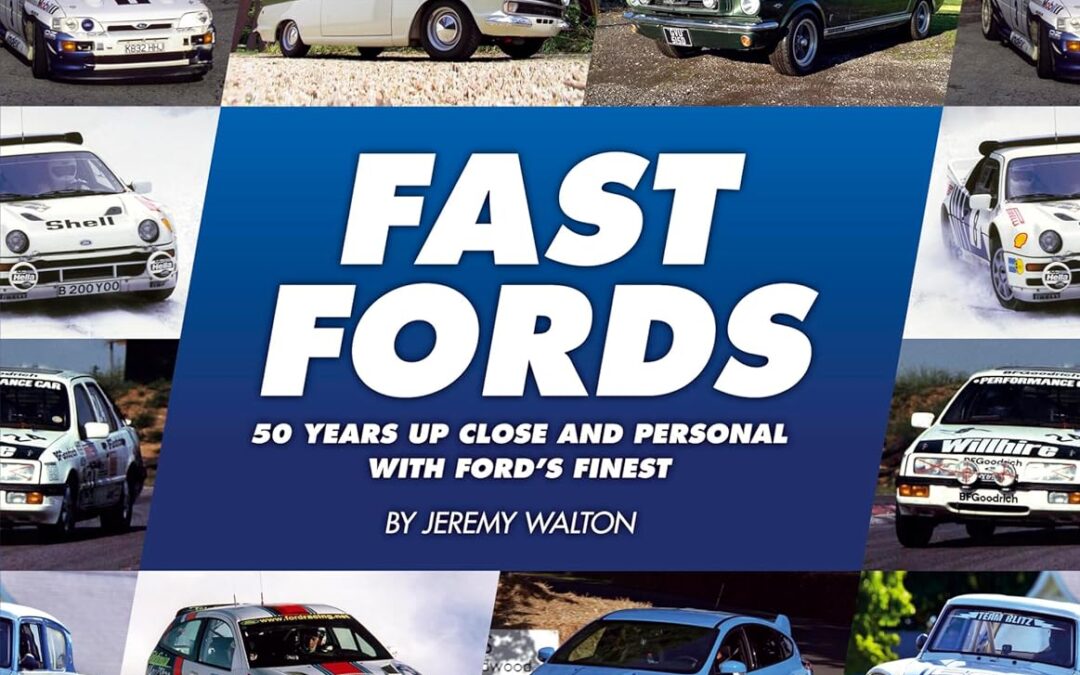
In over 50 years as a renowned motoring journalist and racing driver, Jeremy Walton has driven many, many hundreds of performance cars, but Fords have always been prominent among them and particularly close to his heart.
He was on the scene when fast Fords arrived in the early sixties alongside the Blue Oval becoming serious about motorsport. He has tested almost every significant performance derivative ever since, many straight from Ford’s competitions department. From Cortinas to Capris, Escorts and Sierras, via the epic GT40s to extraordinary Transit Supervans and into the new Millennium with Mondeo, Focus and Fiesta, Walton was there.
- Populars and Anglias: the ‘Berpop’ club racing special; Harry Potter boosts Anglia’s global fame; future Grand Prix talent within Roger Williamson’s Anglia; World Champion Graham Hill’s speedy Goodwood endurance week.
- Cortinas in all their variety: from the ex-Jim Clark British Saloon Car Championship winner to the author’s later BRM-tuned Cortina Lotus, plus three Uren-modified Savage V6 legends.
- Ford GT40s: driving experiences of two factory-owned examples, a pair of modern tributes and a privately owned example in Gulf colours.
- Supervans: Ford’s three generations of ludicrously fast Transits, variously with GT40 and Cosworth V8 engines.
- Rear-drive Escorts: numerous competition versions, including internationally celebrated RS1600s raced by John Fitzpatrick and rallied by Timo Mäkinen.
- Capris in profusion: all generations tested and raced, including the unique story of a 3-litre driven by Royalty and a triple World Champion; tales from the British Touring Car Championship, infamous ‘celebrity’ events and Belgium’s classic Spa 24 Hours.
- Front-drive Escorts: more racing experiences, Princess Diana’s immensely valuable Escort RS, plus a trio of wild rides in 550bhp turbocharged four-wheel-drive rallycross versions, setting records for electronically timed 0–60mph sprints.
- Sierras of many shades: from XR4i and XR 4×4 to Cosworth and RS500, including extensive racing, plus a winning factory World Rally Championship RS and the inevitable stolen road-test Cosworth RS.
- Works Escort Cosworth and Mondeo: still testing Ford’s finest into the 1990s, including two generations of Focus RS and Fiesta ST.
- American hearts: experiences with V8 Mustangs, Falcons and Thunderbirds, including a thundering NASCAR ‘T-Bird’ track test.
- American hearts: experiences with V8 Mustangs, Falcons and Thunderbirds, including a thundering NASCAR ‘T-Bird’ track test.
Presenting his extraordinary expertise and experience in his trade-mark colourful writing style, he puts the reader in the driving seat for a rollercoaster of exciting rides. Any enthusiast who has ever enjoyed a fast Ford will love this entertaining feast of nostalgia.
The Warthog Close Air Support
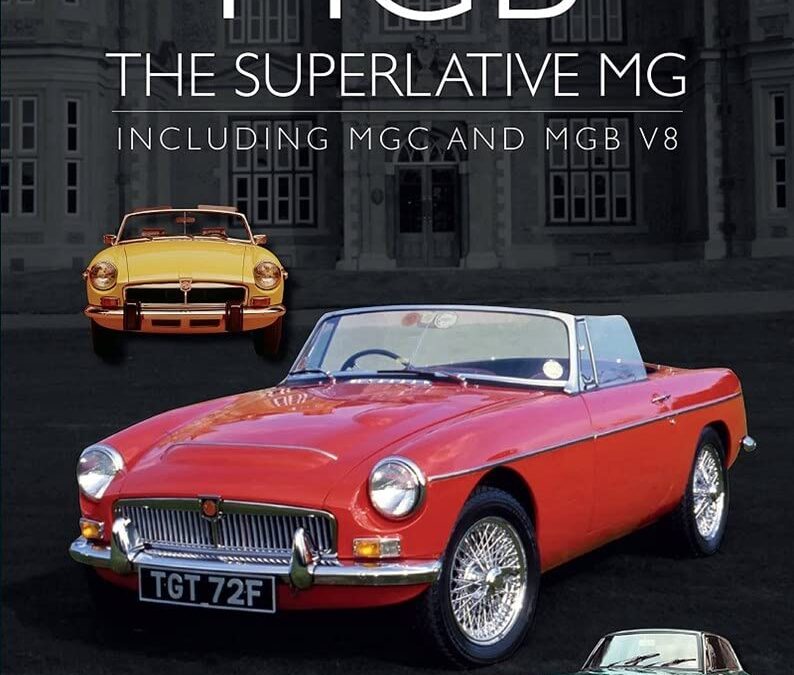
Launching in 1962 and in production for eighteen years, the MGB became one of the most successful sports cars the world has ever known. MGB – The Superlative MG describes how the MGB arose principally from the ideas of one man, MG’s Chief Engineer, Syd Enever, how it was designed and developed, how it survived and thrived, and how it became the classic car still so highly regarded today. With over 620 archive and specially commissioned photographs, including previously unseen models, sketches and prototypes, and packed with tables and data, it includes how the drive to replace the revolutionary MGA led to the development of the MGB, with the key personnel involved at each stage. It goes on to describe the genesis of the Pininfarina-refined MGB GT, and the Ferranti MGB hardtop as well as the MGC and incredible lightweight MGC GTS – including, for the first time, what became of the factory cars when first sold. The story of Ken Costello and his MGB V8, and the factory MGB GT V8 is covered along with the evolution of the MGB through the difficult period of British Leyland to the tragic end of the Abingdon factory. The full story of the lost cause of the Aston Martin Lagonda bid to rescue Abingdon and the MGB – including political and commercial insight is given along with detailed insight from many people who were closely involved in the creation, development and ultimate demise of the MGB. The motorsports story of the MGB family, including race details, insiders’ stories and key racer biographies is covered. Finally, the sales and marketing of the MGB in its two principal sales markets, including the clever advertising campaigns and commercials is covered and details of the overseas assembly of the MGB, in particular Ireland and Australia.
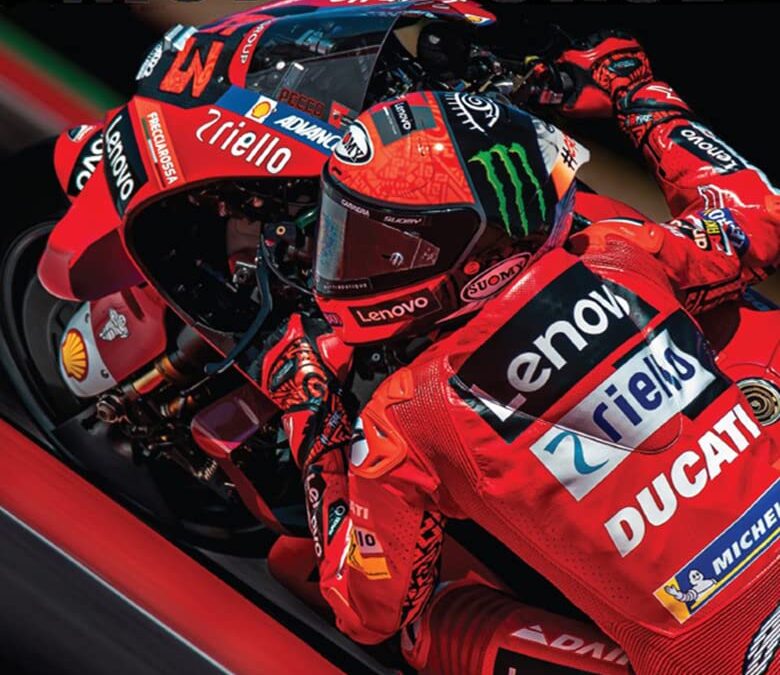
MOTOCOURSE 2022-23
47th YEAR OF PUBLICATION
For lovers of two-wheeled motorsport, Motocourse stands alone as the leading yearbook covering the sport.
Since its launch 1976 it has evolved through the decades into the most authoritative chronicle on the FIM motorcycling world and key national championships.
The 20-race MotoGP championship produced a fascinating mix of races which saw no fewer than five different riders take victories in the first eleven rounds, before the season climaxed in Valencia in November.
Leading the way was the young Frenchman Fabio Quartararo, who on his Yamaha, fought to keep a phalanx of Ducati riders at bay, led by “Pecco” Bagnaia, Jack Miller, Enea Bastinini and Jorge Martin.
Fascinating sub-stories abounded, with the multiple champion Marc Marquez having his season curtailed by recurring injuries and the abrupt decision of Suzuki to pull out of MotoGP competition at the end of the 2022 season, which left the rider market in disarray.
Aside from the premier class, Moto 2 and Moto3 are given ample coverage, where a three-rider tussle between Celestino Vietti, Augusto Fernandez and Ai Ogura were the front runners battling for the top prize. In Moto3 Aspar’s GASGAS team mates Sergio Garcia and Izan Guerara desputed proceedings as the season progressed.
Editor Michael Scott and Neil Morrison supply full reports on each Grand Prix, and Matt Birt brings us his usual run down on the comings and goings of each of the 11 squads in the Team-By-Team review, which has full personnel and technical specifications, the bikes being illustrated beautifully by Adrian Dean’s meticulously crafted drawings.
Full coverage is given of the 12-round World Superbike Series in which Kawasaki’s defending champion Jonathan Rea faced a stern challenge from Yamaha’s Toprak Razgatlioglu and Ducati’s Alvaro Bautista. All the races and the seasons bikes and riders are put under the microscope by Superbike top writer Gordon Ritchie who also covers the supporting World Supersport class.
Peter McLaren provides full race results and lap charts from every round of both MotoGP and World Superbikes as well as complete points tables from all the major championships.
The well of talent that eventually will become the cream of racing almost inevitably springs from the amazingly well-conceived Red Bull Rookies series, in which youngsters vie for supremacy on identical machines. The vastly experienced Peter Clifford charts the ups and downs of their close-fought battles.
After the continuing pandemic, the Isle of Man TT returned for the first time since 2019, and the well-funded and increasingly popular British BSB Superbike series continues to grow in prestige, with an ever-deepening field of talent competing across eight different classes throughout a weekend packed with action.
Motocourse also covers the racing in the USA, via the Moto America Superbike series which saw Yamaha’s Jake Gagne competing head-to-head with the experienced Ducati star Danilo Petrucci.
For 47 years, Motocourse has been the bible of motorcycle racing, written and illustrated by the world’s leading practitioners. The superlative reproduction of its brilliant photographs brings the drama and spectacle of a thrilling racing year to vibrant life.
Motocourse is the essential collectible, and the mainstay of every road racing fans bookshelf.
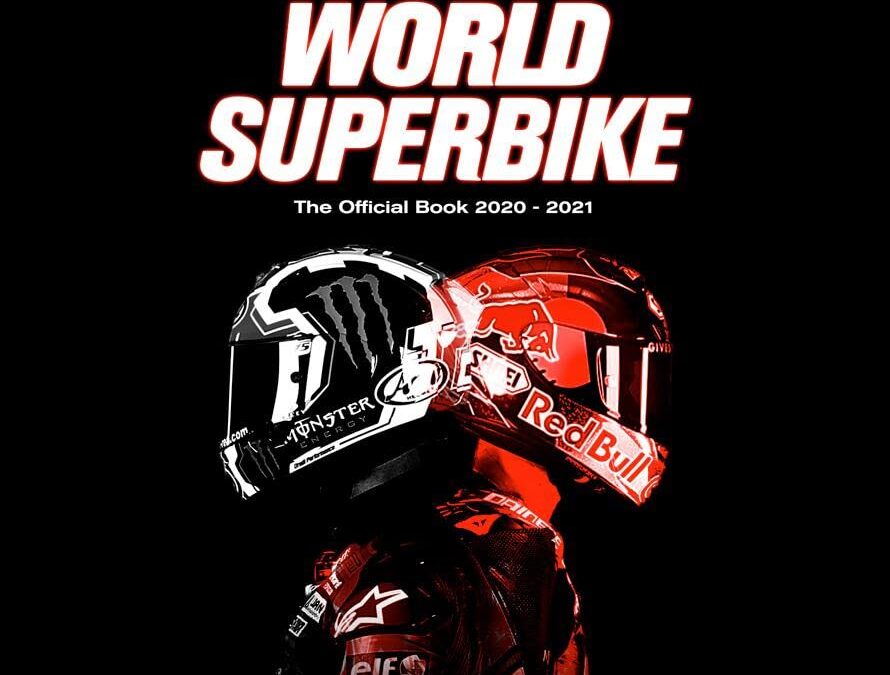
Relive all the most important moments of the last two WorldSBK seasons in the 2020/2021 Official Yearbook, which includes the analysis of every single round and of all the different classes of the Championship.
While the 2020 season saw yet another success for the Rea-Kawasaki duo which, among the manufacturers, prevailed by only one point over Ducati, the 2021 World Championship lived on the close fight between the “usual” Rea and Toprak Razgatlioglu with the Yamaha. But the World Superbike 2020-2021: The Official Book, in addition to the sports news, also reviews the technical aspects of the motorcycles protagonists of the World Championship, dedicating a specific chapter to the World Champion and not neglecting statistics and records, all using a photographic repertoire of extraordinary charm and suggestion.

If you have a hankering for the sand and mud, this thoroughly updated edition of The Four-Wheeler’s Bible is your ultimate resource for overland adventures, both close to home and farther afield.
Whether you are a seasoned veteran or a four-wheeling novice, you will find the information you need to maximize your enjoyment of your next off-road excursion. Author and four-wheeling experts Jim Allen and James Weber begin with a primer on emergency preparedness before combing through all considerations you should take aboard, from trail etiquette to the latest technologies. Allen and Weber explain the concepts of four-wheel-drive systems in easy-to-understand terms and go on to suggest modifications to make off-road rigs more capable, comfortable, and dependable for intended application.
This third edition is completely redesigned and updated to offer explanations of the latest electronic GPS and communications gadgetry, advice and techniques for planning and negotiating overland routes, and updates for new off-road vehicles that will help you get the most from your four-wheeling experience. With you machine up to snuff, you will be ready to hit the trails. Allen and Weber demonstrate the correct way to handle countless common off-road situations. And because everyone makes a mistake eventually, they also show how to get out of a variety of sticky situations. There’s more to the four-wheeling experience than modifying and driving a vehicle, and the authors leave no rock unturned, ensuring that you are equipped to handle nearly any trip, no matter how far into the wilderness you choose to venture.
The Four Wheeler’s Bible is an indispensable piece of gear if you’re planning to hit the trails!
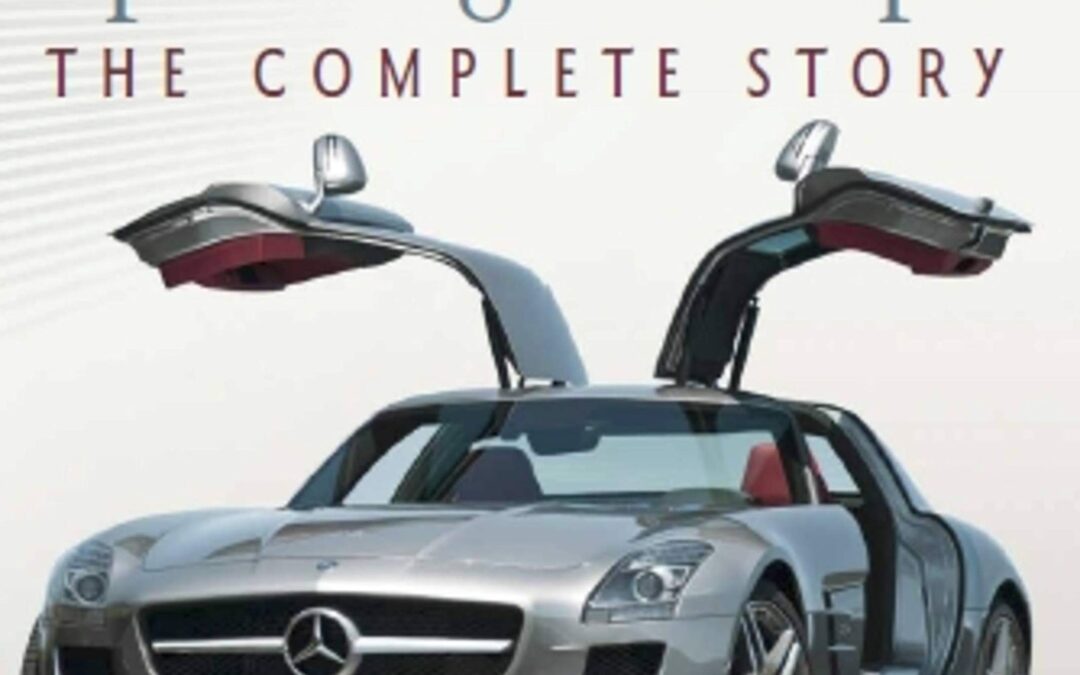
“Every Coupé from Mercedes-Benz has always embodied elegance on four wheels, whether today, 40 years ago or a century ago; our coupés are legends of each and every era in which they were built.” – Michael Bock, Head of Mercedes-Benz Classic
In the very beginning, the automotive industry was dominated by open-top vehicles whose body shapes were very much based on the horse-drawn carriage, there were open and closed carriages and then there was the Coupé. Mercedes-Benz is and has always been a trendsetter, not only in terms of technology, but also in design but what must never be underestimated was the idea of moving away from the ‘classic Coupé saloon style body but also what had become their corporate identity, the Mercedes-Benz, radiator grill.
With over 300 photographs and illustrations, this first volume of the Mercedes-Benz Coupe includes an overview of the early days of ‘Sports-Car’ design and the influences of aerodynamics on design evolution. The book discusses the early protagonists at Daimler-Benz and how they influenced design of the Coupe shape. It shows how the Racing Coupe influenced what became the production Sport Coupe, and covers the experimental and one-off prototypes and the continuation of the Super Sport Light concept through the ‘S-Class’ range.

MOTOCOURSE celebrates its 44th year of publication – and yet again what a year it was for motorcycle racing!
In a thrilling MotoGP season, Marc Marquez and Honda were again the dominant force, with customary brilliance, he romped to his sixth MotoGP title. Other riders occasionally denied the Spanish tyro. The Ducati pair of Andrea Dovizioso, and Danilo Petrucci, along with Yamaha’s Maverick Vinales and Suzuki’s Alex Rins all took to the top step of the podium in a close fought battle for supremecy throughout the whole of the MotoGP field.
Once again, Valentino Rossi defied the years to remain at the sharp end of the field, whilst the future for Yamaha may have emerged in the shape of the 20-year old French sensation Fabio Quartararo, eagerly seeking his first MotoGP win.
Editor Michael Scott provides a no-holds-barred assessment of all the aspects of a compelling season’s action.
MOTOCOURSE alone has full coverage of the support classes, Moto2 and Moto3, where Alex Marquez was looking to clinch the Moto2 crown at his fifth attempt, whilst Lorenzo Dalla Porta, Aaron Canet and Tony Arbolino hotly disputed the Moto3 title.
In World Superbikes, Kawasaki’s dominance was challenged by Ducati’s Alvaro Bautista, with Jonathan Rea eventually managing to retain his championship title for the fifth successive year, ahead of the chasing pack including British favourites Leon Haslam, Chaz Davies and Yamaha’s Michael van der Mark.
No book covers the motorcycle racing world in as much detail as MOTOCOURSE, which, in addition to the two major world series, reviews the unique challenge of Isle of Man TT races, The World Supersport Championship, The British Superbike Championship and the AMA USA Superbike series.
Incredible value for money, with 328 large-format pages, bursting with over 450 stunning colour photographs from the world’s finest photographers, MOTOCOURSE covers it all. No wonder MOTOCOURSE is regarded worldwide as ‘The Bible of Motorcycle Racing’.
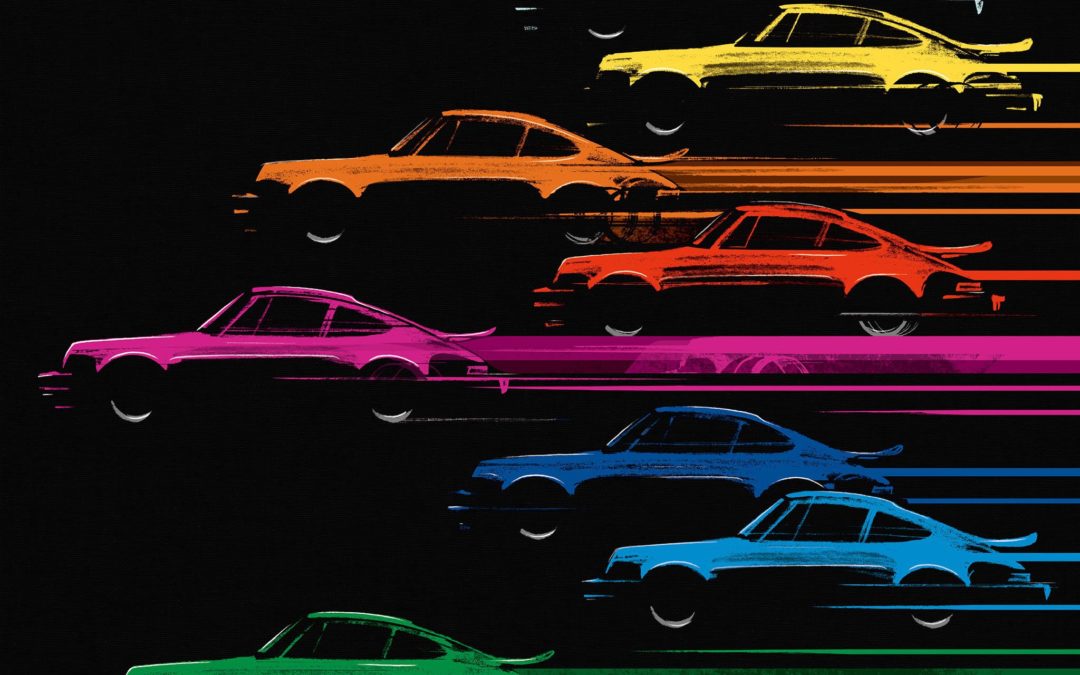
The mid-1970s were dark times for the automotive industry, and darker still for those passionate about high-performance cars. Manufacturers worldwide, struggling to comply with new emissions and safety regulations, were finding it difficult to produce cars capable of delivering a satisfying driving experience. With one or two exceptions-very expensive models built in minute quantities-none did. The cars produced in these years were at best compromised; most were simply dreadful. The OPEC oil embargo had just turned everything upside down while safety and emissions standards were strangling performance and stifling innovation from manufacturers. It was an atmosphere of complete and utter despair, as though all had been lost. Then-out of nowhere-Porsche dropped a bombshell, announcing a turbocharged series production supercar that not only met regulatory requirements but also delivered blistering performance. The 3.0-liter Turbo was an instant sensation, inspiring enthusiasts from every corner of the world and offered hope that perhaps there was still a future for performance cars.
The second Parabolica Press title, Turbo 3.0 continues the theme of being carefully researched using the Porsche archives, private collections, period documentation and intensive study. In an attempt to cover everything an owner, restorer or enthusiast would want to know about the dawn of Porsche’s turbocharged supercar, Turbo 3.0 includes a considerable amount of material never before published: comprehensive discussions of original options, close-up photos of key details, scenes from factory production, coverage of special one-off models and period motorsports. This is the definitive book about Porsche’s immortal 3.0-liter Turbo and it is essential reading for anyone who has ever owned, driven or simply lusted after the first supercar of the modern era.
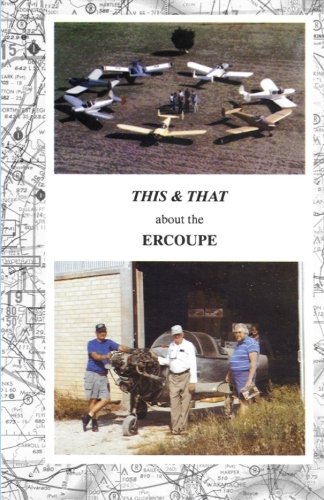
The adventure of ownership, flying, and DIY maintenance of the classic Ercoupe aircraft. It addresses the FAA regulations and appropriate procedures that allow you to do much of your own maintenance. Descriptive color photographs and sketches aid in understanding the mechanical and pre-flight requirements for safe and affordable operations and ownership. The book is a study for the DIY who wants to do as much of the maintenance as the FAA will allow. Included are charts and tables about engine diagnostic analysis, torque value for bolts and nuts, landing gear maintenance, fuel system, etc. The book promotes safety for the pilot by encouraging an understanding of how things work and addresses some of the NO-NO’s which should be avoided. The objective is to enjoy and have fun owning a classic Ercoupe. In addition, there are adventure stories and color aerial photo’s submitted by Ercoupe Pilots sharing their cross country flying experience. For the wannabe pilot, here is an opportunity to preview what he/she can expect with that new license and a Fly-About (open or closed) convertible Ercoupe.
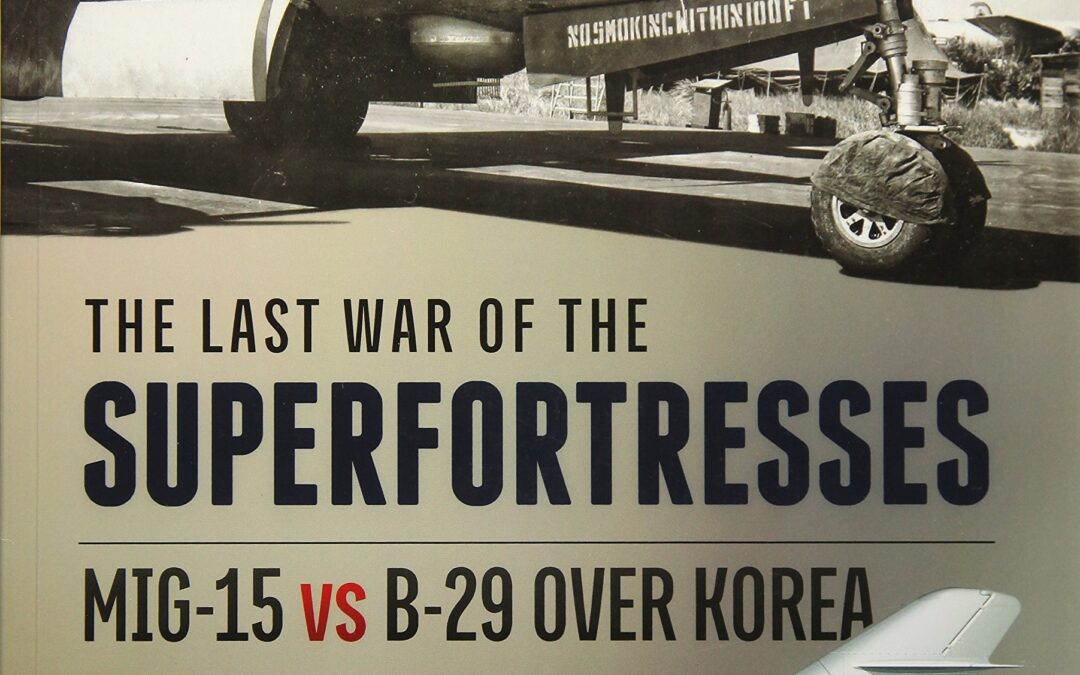
This work is an attempt by the authors to give as full and detailed a history as possible of the confrontation between Soviet fighters and the principal strike force of the United States Far East Air Force – the B-29 ‘Superfortress’ bombers during the course of the Korean War between 1950-1953. Military documents, which the authors have studied over many years of work in the Central Archive of the Ministry of Defense of the Russian Federation in Podolsk – as well as published Western sources – form the basis of this book.
The recollections of pilots who served in the 64th Fighter Air Corps, and who participated personally in the events described, are also widely used. Almost all the battles that took place between Soviet fighters and the ‘Superfortresses’ are analyzed in detail; the authors have, on the basis of a comparison of Soviet archive documents and data from published Western sources, attempted to clarify the actual losses on both sides in these battles. Particular attention has been paid to key events in the history of the confrontation between the MiG-15 and B-29 such as the air battles of April and October 1951, which had a significant impact on the course of the Korean War and influenced the development of military aviation in both the USSR and the USA. Following the encounters on the approaches to the bridges at Andung of 12 April 1951 Strategic Air Command decided against using ‘Superfortresses’ close to the area around the MiG bases. The outcome of a series of air battles from 22 to 27 October 1951 – the most famous of which was the battle between MiGs and B-29s in the area close to the airfield at Namsi on 23 October (‘Black Tuesday’) was a ban by Strategic Air Command on daylight operations by ‘Superfortresses’ in the Soviet fighter’s zone of operation. These battles also influenced the technical policy of the United States Air Force in relation to strategic bombers.
Extensive losses in combat with the MiGs served as one of the most influential arguments for curtailing the piston engine B-36 and B-50 bomber programs and boosting development of one of the most famous aircraft in the history of global aviation – the B-52 ‘Stratofortress’. Night operations, to which the B-29s and subsequently Soviet fighters were transferred, are also analyzed in detail in this book. These nocturnal operations culminated in the air battles of December 1952 and January 1953. After sustaining losses in these battles that were comparable to those of October 1951 the ‘Superfortresses’ would subsequently only carry out nocturnal sorties to the MiGs’ zone of operation in poor weather conditions. In this work, the authors have analyzed the advantages and the disadvantages of the La-11 and the MiG-15bis – the principal fighters of the 64th Fighter Air Corps – from the point of view of their ability to intercept the B-29s. Attention has been paid to the tactics of the opposing sides, and to how these changed over the course of the war. The technical aspects of the confrontation between Soviet fighters and ‘Superfortresses’ have been examined, and the reasons behind the different periods of success or failure in terms of performance in combat have been identified.
A great deal of statistical material has been provided in this book, which characterizes combat operations carried out by the B-29s and the fighters of the 64th Fighter Air Corps, both within the text itself and in the form of easy-to-use tables. The book is illustrated with photographs obtained both from the personal archives of veterans of the 64th Fighter Air Corps; from the Central Archive of the Ministry of Defense of the Russian Federation; and US National Archives. Color profiles showing camouflage & markings are also included.
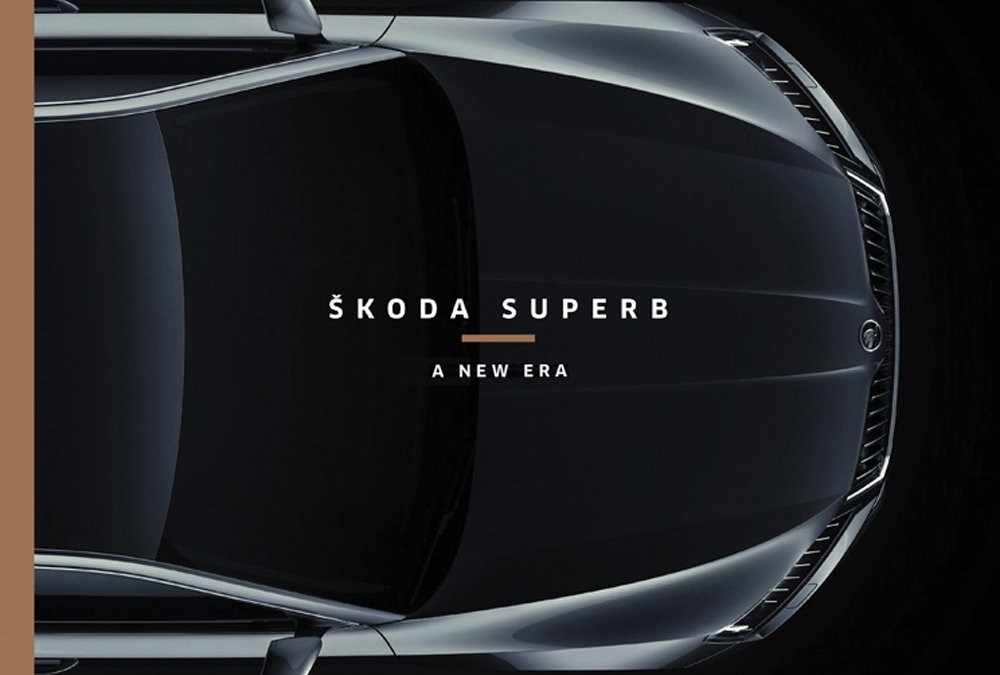
This book, somewhat like the model of car it showcases, is beautifully designed. It features high-quality photography, arranged in extensive galleries, followed by important model information – the “Superb” dossier and a complete history of the Skoda brand and its roots, celebrating a legacy of 120 years.
Exceptional, superior, just superb: the new Skoda Superb at close range.

During the 1940s, the Soviet government, knowing of the American nuclear program, elected to begin work on its own nuclear weapon program. The goal was to create and test the first Soviet atomic bomb within a short time interval to counter a major postwar threat from the West. An important secondary concern became apparent: how to deliver that weapon to the target. Thus, the Tu-95 Bear and the Tu-142, its close relative, were born. The Tu-95 is a large, heavy strategic bomber with a slim fuselage, swept wings, and four powerful turboprop engines driving counter-rotating propellers. It remained in production as a maritime patrol aircraft and cruise missile carrier more than 30 years after it was first produced. The aircraft was revolutionary in the application of a swept wing and turbine powerplants. Yefim Gordon and Peter Davison are the authors of other Specialty Press titles such as Mikoyan Gurevich MiG-15 Fagot, Mikoyan Gurevich MiG-29 Fulcrum, and Sukhoi Su-27 Flanker. Together they use over 200 photos to illustrate the story of the Tu-95. Topics covered include design, development, structural detail, international production, trials, comparisons, and much more.

Foreword: Lord Montagu of Beaulieu
A close relation of Winston Churchill, Amherst Villiers is perhaps best known as the man who supercharged the Blower Bentley (which his close friend Ian Fleming had James Bond drive in Casino Royale and Moonraker). However, he also developed racing cars, designed Malcolm Campbell’s first land speed record breaking Bluebird and made a return to front-line motor racing in the 1960s with BRM and in the 1970s with Graham Hill’s eponymous Grand Prix team. He spent the best part of 30 years in North America working for the likes of Grumman, Douglas and Boeing on a variety of space projects. In his spare time, he was a society portrait painter, and his paintings of Fleming and Hill hang in the London’s National Portrait Gallery.
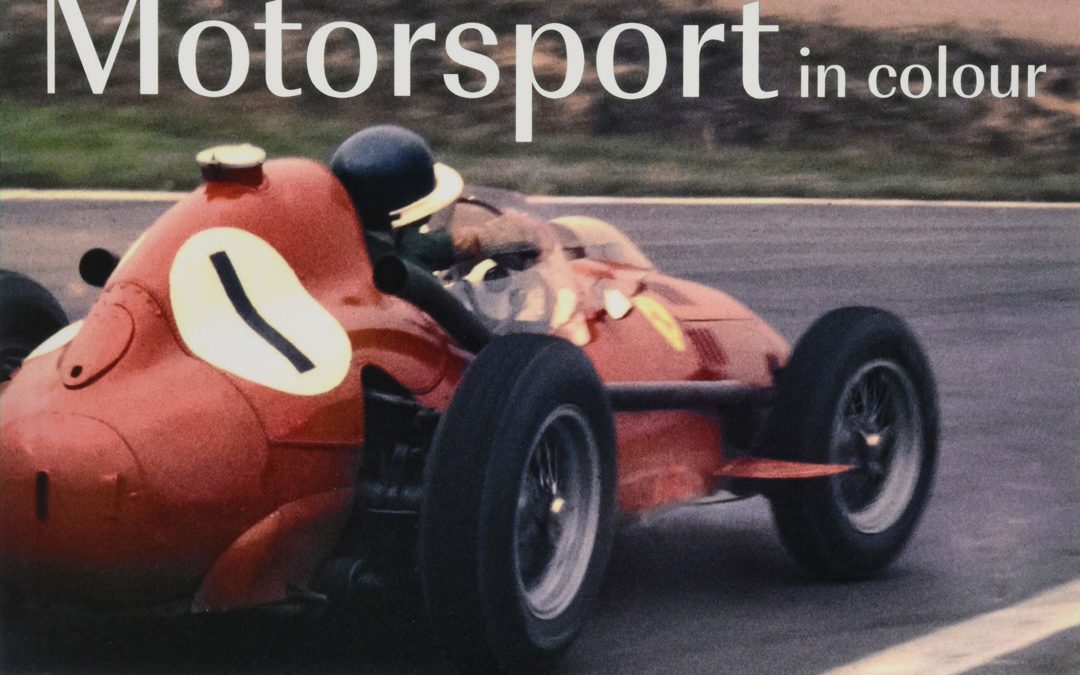
It was unusual for sporting events in the ’50s to be photographed in colour, so this archive is a real treasure, capturing the excitement and atmosphere from a golden age of British motorsport. Despite being unpublished at the time they were taken, these original photographs were unearthed 50 years later, sensitively restored, and then published for the first time in this book. Images of Goodwood, Aintree and Brands Hatch feature classic 1950s racing cars such as Triumphs, Jaguars, Mercedes and Porsches. See close ups of the action and many of the well known drivers of the time – Fangio, Taruffi, Stirling Moss, Masten Gregory, and many more. Martyn Wainwright’s love of the sport, and talent for reportage photography shines through in this evocative and authentic collection.
An absolute must for Revivalists and all lovers of classic motorsport, 1950s Motorsport in Colour has been out of print for several years, but is now available again in this new paperback edition as part of Veloce’s “Classic Reprint” series.
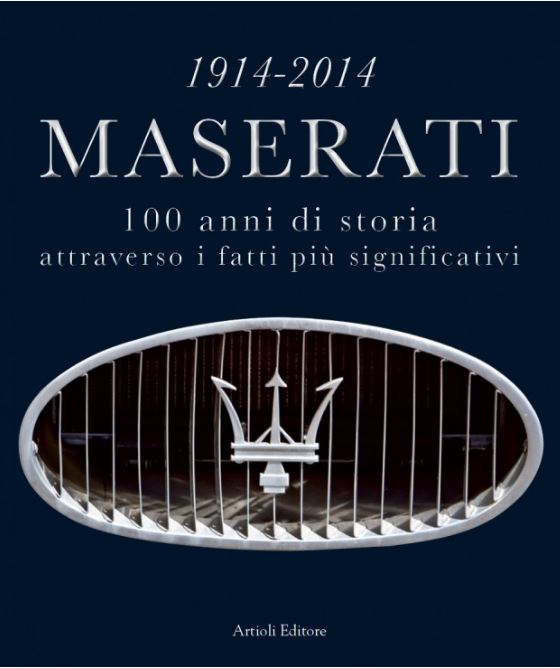
This volume is a commemoration of the 100 years of history of Maserati, through an analysis of the facts and car models together with the events and the certainties (sometimes doubts…) of the men who made such a fascinating history.
This close up is enhanced by episodes, trivia, news and special accounts, which the chronological order allow us to highlight.
(From the preface by Daniele Buzzonetti)
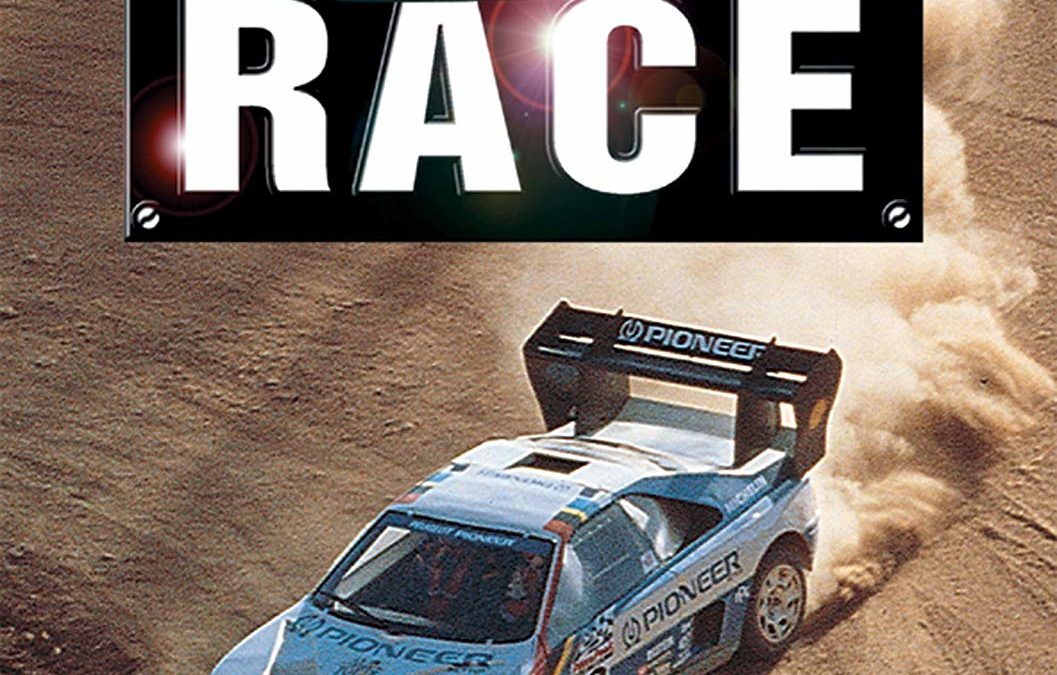
The ‘Group B’ International Motorsports Category was conceived in the late seventies as a return to the good old days when amateur and factory teams alike could run the same production-based cars in either sports car racing or championship rally events. By the early eighties the class had become the ‘Godzilla’ of the rally scene and what resulted were the most awesome cars ever seen on the rally stages of the world – 600 horsepower, 4WD, turbocharged monsters that could cover forest, tarmac or gravel stages faster than anything ever seen before or since. In 1986 the door was slammed shut on the F1 cars of mountain and forest roads. Faster and faster cars combined with wilder and crazier crowds meant that within the confines of rally car competition the group B rocket ships were just “too fast to race.”
The legacy of Group B, however, is a whole range of spectacular cars that continue to thrill enthusiasts. Features the Ford RS200, Lancia 037 Rally, Lancia S4, MG Metro 6R4, Peugeot 205/T16, Audi Quattro, Renault 5 Turbo, Opel, Citroen also the amazing Ferrari 288GTO Evoluzione, Jaguar XJ220 supercar and Porsche 959 – the car that came closest of all to fulfilling the Group B ethos. It won both the Paris-Dakar and its class in the Le Mans 24 Hour Race!
Includes awesome action footage and stunning close ups.
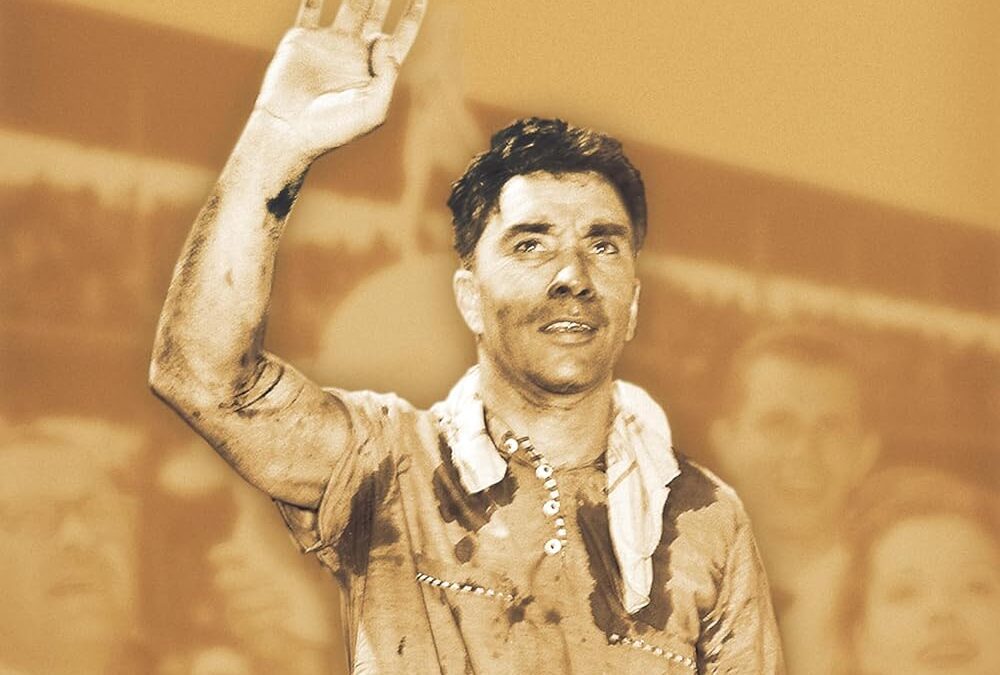
Bill Vukovich was the greatest race driver of his era, a grim, hard-charging product of a humble and difficult childhood. He honed his racing skills and temperament on the midget and sprint car tracks in California and then went on to dominate the Indianapolis 500. He led 150 laps of the race in 1952 before steering failure forced him out eight laps before the finish. He won the race in 1953 and ’54, and still is the only driver to have led the most laps in the race for three consecutive years. He had a 17-second lead after 57 laps in 1955 when a multi-car accident on the backstretch sent him flying over the outside wall. He landed upside down on parked cars and was killed instantly. Indianapolis sportswriter Angelo Angelopolous, widely recognized as one of the best in the country at his craft, was the only media member to grow close to Vukovich. He dedicated himself to telling Vukovich’s dramatic life story after giving up his newspaper career to become a freelancer for national magazines. He was working against a tight “deadline,” however, because he was slowly dying of leukemia – contracted from the radiation he received while flying over the Hiroshima bombing site as a Navy pilot during World War II. Angelopolous, who died in 1962 at age 43, had a contract with a publishing house and left behind an edited manuscript that for unknown reasons never reached print. He had insider access to Vukovich’s garage at the Indianapolis Motor Speedway and socialized with him as well. He presents never-before-published details of Vukovich’s life and career, including dialogue that will make readers feel as if they are along for the ride. The story reads like fiction, a Hollywood movie script, but is thoroughly researched and entirely truthful. Both Vukovich and Angelopolous are members of all the halls of fame that are appropriate for their careers, and together they present an unforgettable story. Although private by nature and gruff with strangers he was generous with friends and extremely close to his wife and two children, and regarded as a man of great integrity.
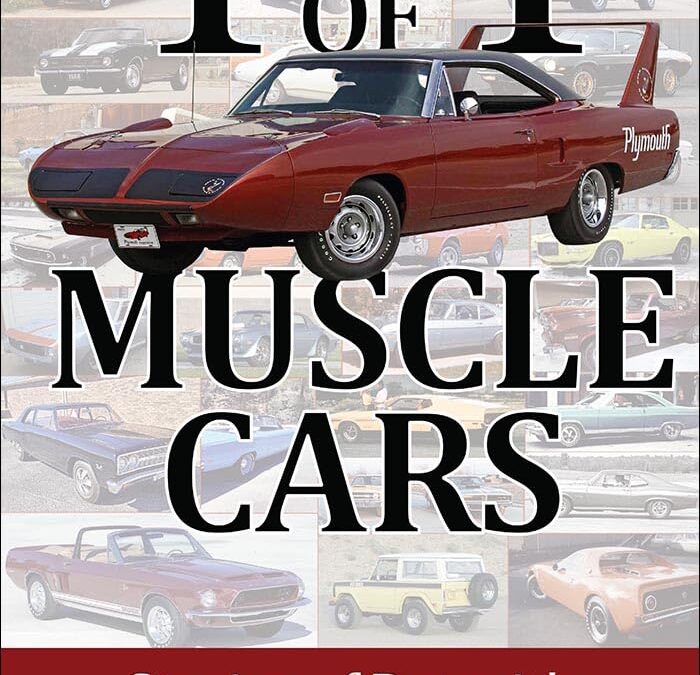
Learn about the rarest muscle cars ever produced with this new book.
In the world of muscle cars, many were produced and sold in large enough quantities that they would be considered special but not particularly rare at the time of production. The Boss 429 and Plymouth Superbird were produced for racing homologation reasons, and since they were very expensive to produce, the manufacturers ensured that they would be rare. However, there is rare, and then there is rare.
Prototypes and special factory builds, factory production cars, and super car tuners and builders are all covered in this new book by muscle-car historian Wes Eisenschenk. Some are single examples, some are very close to being the last remaining example, and all are extremely rare. Some have no surviving example known to exist. Featured cars include a Boss 429 Cougar, a 1971 Pontiac Ventura II Sprint 455, a 1965 Chevelle 300 COPO car with the L78 option, and a 1970 FK5 Deep Burnt Orange Metallic Superbird. Dealer promotional specials include a 1968 AMC AMX Von Piranha, a 1970 Dick Harrell LS6 454 Camaro, and a 1973 Nickey Chevrolet 427 Nova.
These are cars that you will read about but likely never see. For a fun ride through muscle-car history and great stories of the rarest muscle cars ever produced, add this book to your automotive library today.





















